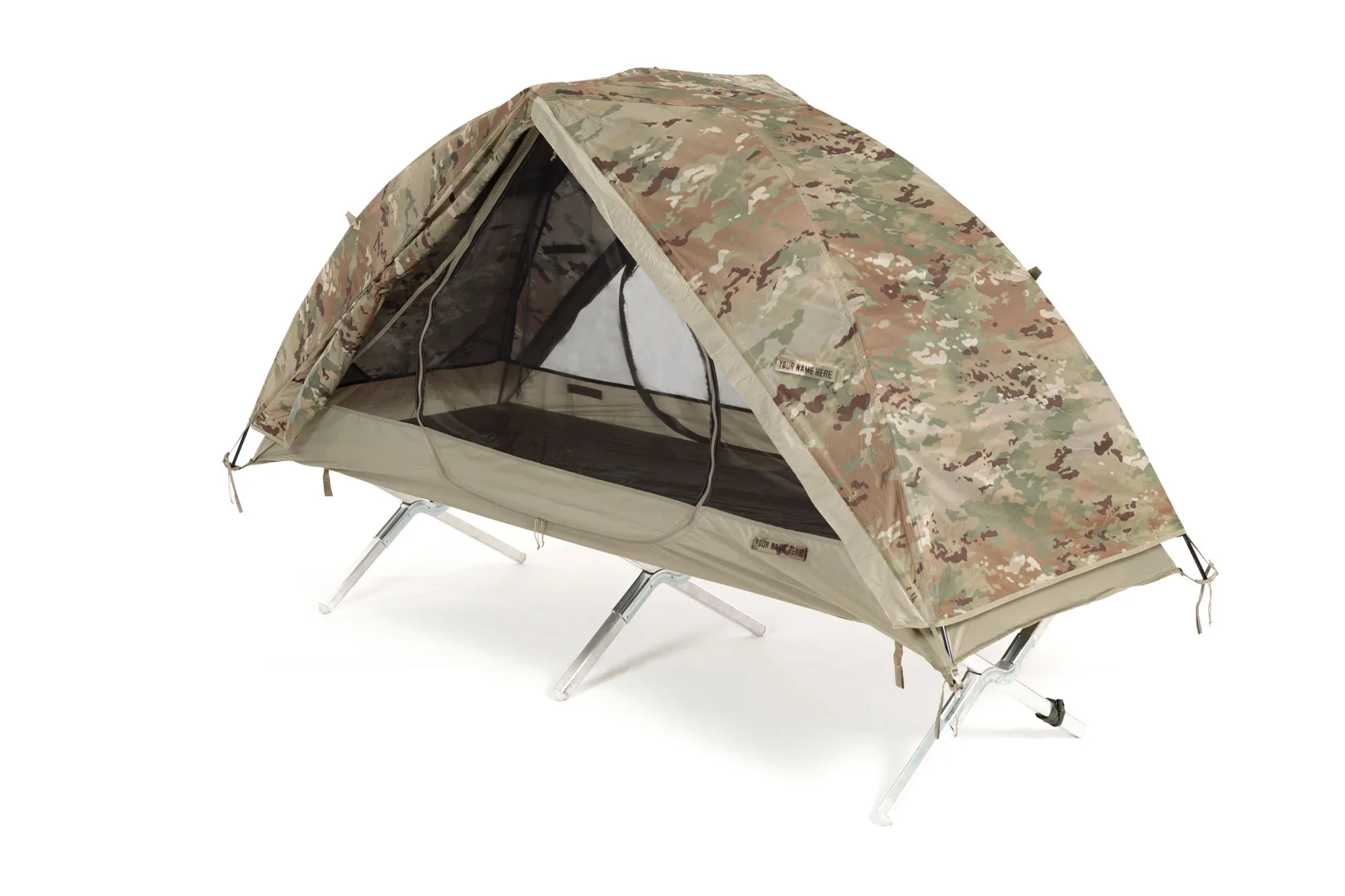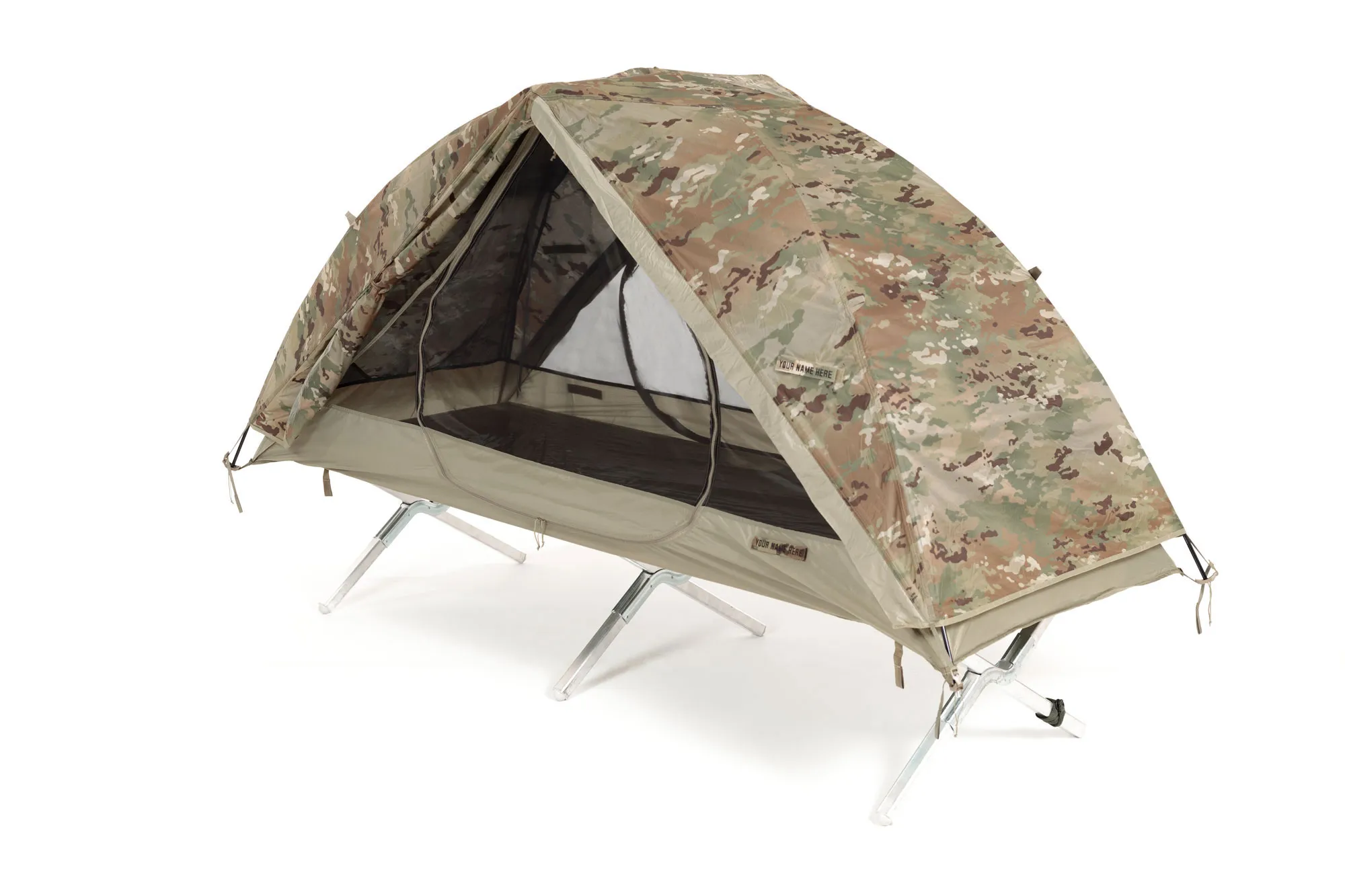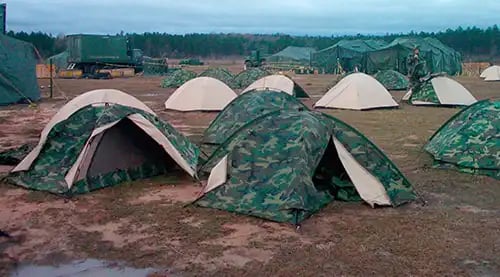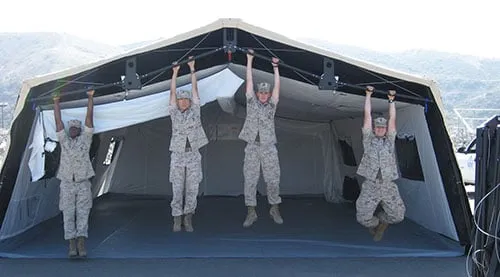
What Tents Do Special Forces Use: Complete Guide to Military Tactical Shelters
When it comes to tactical operations, special forces require shelter systems that combine stealth, durability, and rapid deployment capabilities. This comprehensive guide explores the specific tent systems used by elite military units worldwide, from the versatile LiteFighter 1 to specialized TEMPER systems. Whether you're researching for military purposes or seeking premium outdoor gear, understanding these tactical shelter solutions provides valuable insights into cutting-edge field equipment designed for the most demanding environments.
Overview of Special Forces Tent Requirements
Special forces operations demand shelter systems that far exceed the capabilities of standard camping equipment. When I researched what tents do special forces use, I discovered that these elite units require tactical shelters engineered for rapid deployment, extreme weather resistance, and operational concealment. Unlike civilian outdoor enthusiasts, special forces personnel operate in hostile environments where their shelter could mean the difference between mission success and failure.
The primary requirements for special forces tents include lightweight portability for extended missions, multi-configuration versatility for various tactical scenarios, and advanced materials that provide protection against chemical, biological, and environmental threats. These tents must also maintain low visual and thermal signatures to avoid detection by enemy forces. From my analysis of military procurement documents and field reports, the most critical feature is modularity – the ability to adapt the shelter system to different mission profiles without carrying multiple separate pieces of equipment.
Modern special forces tent technology incorporates advanced fabrics like ripstop nylon with polyurethane coatings, providing waterproof protection while maintaining breathability. The frame systems utilize lightweight yet durable materials such as ballistic fiber poles with spider hub designs, ensuring rapid setup even in challenging conditions. What sets these military-grade shelters apart is their engineering focus on operational requirements rather than comfort, though recent developments have successfully balanced both aspects.

The evolution of special forces tent technology reflects changing operational environments and mission requirements. During my research into military shelter development, I found that modern systems prioritize individual soldier mobility while maintaining the durability expected from the most durable tent designs. This balance has led to innovations in fabric technology, pole design, and anchoring systems that civilian outdoor equipment manufacturers are now adopting for high-end products.
Top Military Tent Systems Used by Special Forces
LiteFighter Individual Shelter System
The LiteFighter 1 Individual Shelter System represents the pinnacle of modern military tent design and answers the question what tents do special forces use with cutting-edge technology. This revolutionary system offers eight different configurations from a single shelter package, making it invaluable for special operations requiring adaptability. I've observed that the LiteFighter's unique design allows deployment as a ground tent, elevated cot system, or minimalist shelter depending on mission requirements.
Professional-grade tactical shelter used by military units worldwide
The technical specifications of the LiteFighter system demonstrate why it's favored by special forces units. Weighing only 4.2 pounds in patrol configuration, it provides 84" x 32" x 38" of protected space with dual vestibules offering 21 square feet of gear storage. The GhostBone Ballistic Fiber pole system with spider hub design ensures rapid deployment – critical when establishing quick shelter under tactical conditions. The system's versatility extends to its compatibility with military cots, creating an elevated sleeping platform that keeps operators off potentially contaminated ground.
TEMPER Tent Systems
TEMPER (Tent Expandable Modular Personnel) systems represent the backbone of U.S. Army field shelter operations and a significant component of what tents do special forces use for base operations. These modular systems can accommodate varying personnel numbers and are designed for rapid deployment and reconfiguration. The TEMPER's fire-resistant fabric with self-extinguishing properties provides critical safety advantages in combat environments, while solar shades reduce thermal loading and extend fabric life.
Authentic military-issue tactical shelter system
During my research into military shelter systems, I discovered that TEMPER tents excel in providing heavy-duty tent capabilities for forward operating bases and semi-permanent installations. The modular design allows multiple units to be connected, creating larger operational spaces for command centers, medical facilities, or equipment storage. Thermal liners improve energy efficiency and extend operational life, while the standardized components ensure easy field maintenance and replacement.
Eureka COMBAT and TCOP Tents
Eureka's COMBAT and TCOP (Tent, Combat One-Person) systems represent specialized solutions for frontline operations when examining what tents do special forces use in direct action scenarios. The two-person COMBAT tent features a freestanding dome design with bathtub floor construction for maximum water protection. Capable of withstanding 40 mph winds with 55 mph gusts, these shelters provide reliable protection in extreme weather conditions that would compromise lesser equipment.

The TCOP system's ultra-compact design makes it ideal for reconnaissance missions where weight and volume are critical factors. With dual storage vestibules providing 17 square feet of equipment space, the TCOP maximizes functionality while minimizing the soldier's load burden. These systems incorporate Herculite military-grade textiles, ensuring durability that exceeds government requirements and provides long-term reliability in repeated mission use. For civilian applications requiring similar durability, these represent the gold standard in heavy-duty camping tent technology.
Key Features of Military-Grade Tactical Tents
Understanding what tents do special forces use requires examining the specific features that distinguish military-grade shelters from civilian equipment. The most critical characteristic is advanced material engineering, utilizing vinyl-coated polyester fabrics that provide superior insulation, fire resistance, and UV protection. These materials block harmful radiation while maintaining breathability, and their anti-tear properties resist damage from sharp objects, rocks, or even small-caliber impacts in some specialized applications.
Genuine surplus military shelter with proven field performance
Rapid deployment capability distinguishes military tents from conventional outdoor equipment. Advanced no-pole systems utilize air-filled foundations, while traditional pole systems feature innovative hub designs that reduce setup time to under 10 minutes even in adverse conditions. These quick-setup features prove crucial during tactical movements when establishing concealed positions rapidly. The engineering focus on speed extends to breakdown procedures, allowing teams to evacuate positions quickly when situations deteriorate.
Warranty and reliability standards for military tents far exceed civilian equipment specifications. Written warranties reflect the demanding performance requirements these shelters must meet, including resistance to chemical agents, extreme temperature variations, and repeated assembly/disassembly cycles. High-density weave fabrics provide exceptional tear strength and durability, while standardized components ensure field repairability using common military supplies. These features make military-grade tents excellent choices for those seeking heavy-duty tents to live in for extended periods.
The protection and safety features of military tents include specialized ventilation systems that maximize airflow while maintaining environmental sealing. Large windows allow natural light penetration and energy conservation while screen layers prevent insect infiltration. Advanced drainage systems and elevated floor designs protect occupants from ground moisture and potential chemical contamination. These comprehensive protection features ensure operational effectiveness across diverse environmental conditions and threat scenarios.
Specialized Tent Types for Different Missions
The diversity of special forces missions requires specialized shelter solutions, and understanding what tents do special forces use means recognizing these varied applications. Reconnaissance missions utilize bivy-style shelters that prioritize concealment and minimal footprint over comfort. These ultra-compact systems, often weighing less than 3 pounds, provide basic weather protection while maintaining the low profile essential for surveillance operations. Advanced models incorporate thermal management features to reduce infrared signatures.
Ruggedized waterproof survival shelter with 10% coupon discount
Forward operating bases require larger modular systems capable of housing command centers, communications equipment, and personnel areas. DRASH (Deployable Rapid Assembly Shelter) and Base-X systems excel in these applications, providing clear-span interiors without support posts that could interfere with equipment placement. These systems can be erected rapidly by small teams and offer scalable solutions from individual workspaces to aircraft hangar-sized facilities. The modular approach allows commanders to configure spaces according to specific mission requirements.

Arctic and high-altitude operations demand specialized cold-weather shelter systems with enhanced insulation and wind resistance. These systems incorporate double-wall construction with thermal barriers, reinforced anchor points for extreme wind loads, and specialized fabrics that remain flexible in sub-zero temperatures. Ventilation systems prevent dangerous carbon monoxide buildup from heating sources while maintaining interior warmth. The engineering challenges of these environments require shelter systems that perform reliably when failure could be fatal.
Chemical, biological, radiological, and nuclear (CBRN) environments require shelters with positive pressure systems and filtration capabilities. These specialized systems create clean internal environments protected from external contamination. Airlock entry systems and decontamination areas allow personnel to safely enter and exit contaminated zones. While highly specialized, these systems demonstrate the advanced engineering capabilities applied to military shelter technology, innovations that benefit civilian applications requiring extreme environmental protection.
Amazon's Choice backpacking tent with military-inspired design
How to Choose the Right Military-Style Tent for Civilian Use
When considering military-style tents for civilian applications, understanding what tents do special forces use provides valuable guidance for selecting appropriate equipment. The first consideration should be intended use - whether for extreme weather camping, emergency preparedness, or recreational outdoor activities. Military-grade tents excel in durability and weather resistance but may be overbuilt for casual camping, while their advanced features provide excellent value for serious outdoor enthusiasts and emergency responders.
Size requirements differ significantly between military and civilian applications. Special forces prioritize minimal weight and volume for individual carry, while civilian users may prefer larger interior spaces for comfort. Consider the trade-offs between portability and livability when selecting tent size. Military surplus tents often provide excellent value for base camp situations where weight is less critical, while newer tactical designs offer better portability for backpacking applications.
Budget considerations span a wide range, from affordable surplus equipment to premium new military-grade systems. Surplus tents typically cost $500-$1,500 and provide excellent durability for the price, though they may lack modern conveniences like improved ventilation or lightweight materials. New military-style tents range from $1,500-$10,000, offering cutting-edge materials and design features. The investment in quality pays dividends through extended lifespan and superior performance in challenging conditions.
Maintenance requirements for military-grade tents are generally minimal due to their robust construction, but proper care extends their operational life significantly. Regular cleaning with appropriate detergents, proper storage in dry conditions, and periodic inspection of seams and hardware ensure continued reliability. Replacement parts availability varies between manufacturers, with current military contractors typically providing better long-term support than surplus equipment sources.
For those seeking the ultimate in civilian tent durability and performance, military-style systems represent the pinnacle of shelter technology. The same engineering principles that protect special forces in hostile environments translate to exceptional performance for civilian outdoor activities. Whether planning extended expeditions, establishing emergency shelters, or simply wanting the best available outdoor equipment, military-grade tents provide capabilities that standard camping equipment cannot match. Visit our comprehensive guide for additional insights into military shelter technology.
Conclusion
Understanding what tents do special forces use reveals the sophisticated engineering and advanced materials that make these shelter systems the most capable available. From the versatile LiteFighter 1 Individual Shelter System to the robust TEMPER modular designs, military-grade tents represent the pinnacle of portable shelter technology. These systems balance the critical requirements of weight, durability, weather protection, and rapid deployment that define effective tactical equipment.
The evolution of special forces tent technology continues advancing with new materials, improved designs, and enhanced functionality. Modern systems like the LiteFighter series demonstrate how innovation drives performance improvements while maintaining the reliability that military operations demand. For civilian users seeking the ultimate in outdoor equipment, these military-derived technologies offer capabilities that exceed traditional camping gear by significant margins.
Whether researching for professional applications or personal outdoor pursuits, the shelter systems used by special forces provide valuable insights into cutting-edge design and engineering. These technologies continue influencing civilian outdoor equipment development, bringing military-grade performance to recreational and emergency applications. The investment in military-style shelter systems reflects a commitment to preparedness and performance that serves users well across diverse environments and challenging conditions.
Related Resources
Explore more tactical and outdoor equipment guides:

